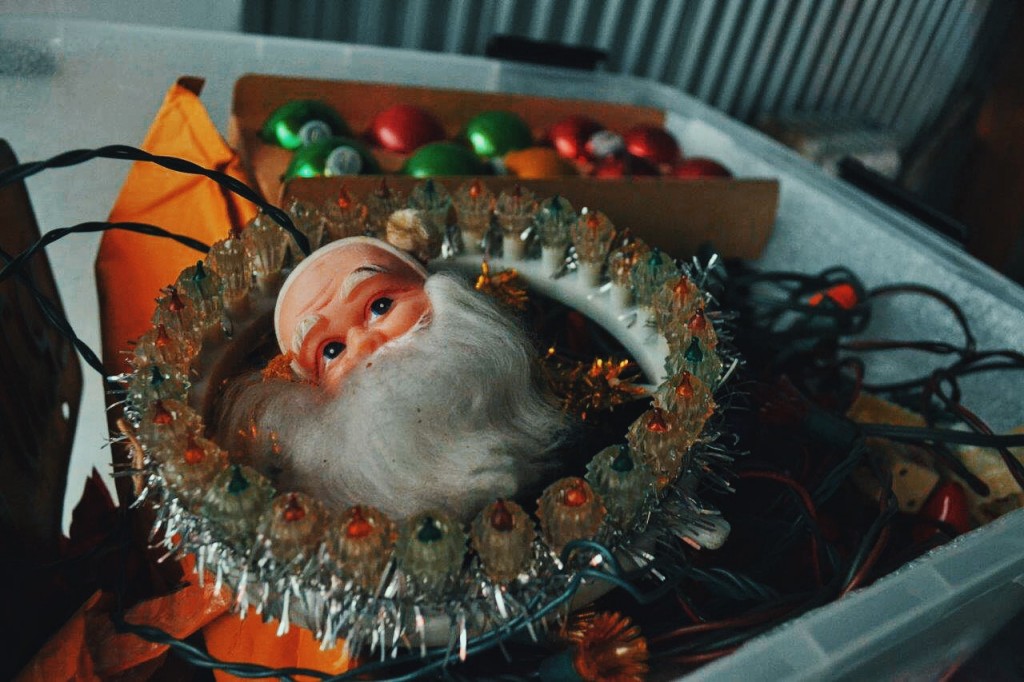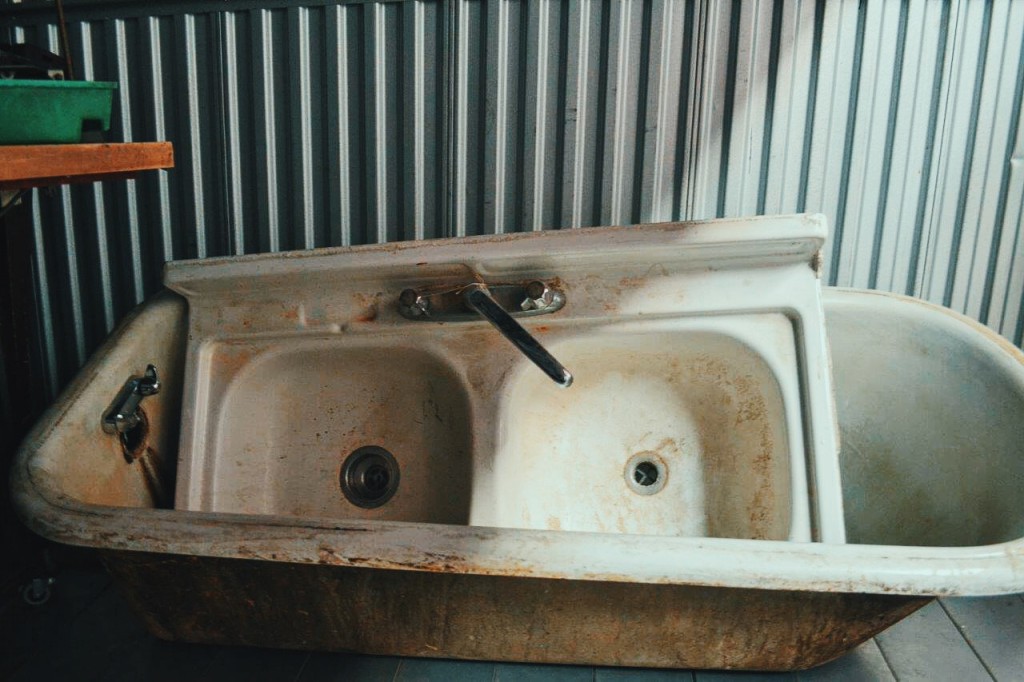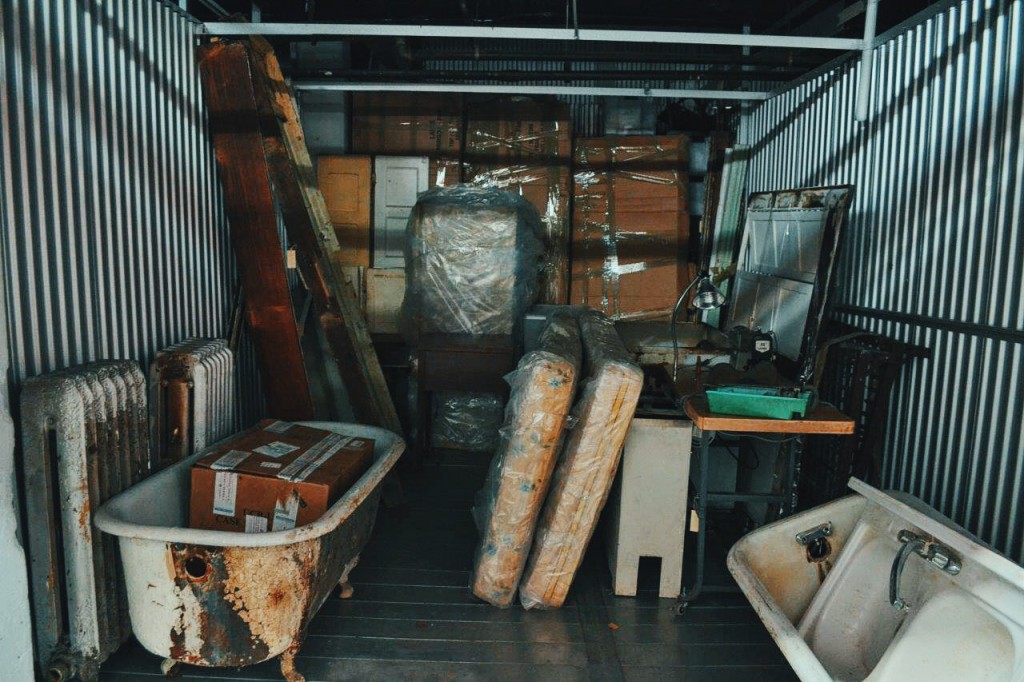- Post by Gemma Solomons, Marketing & Communications Coordinator at the Lower East Side Tenement Museum
Blog Archive
Indiana Jones and the CubeSmart of Bushwick
It’s a cold, gray afternoon in early November when we headed to the Lower East Side Tenement Museum’s storage unit located in the Brooklyn neighborhood of Bushwick. There are many streets in New York one could point to and call it a perfect example of New York City’s rich, fluid diverse landscape, and this street in Brooklyn is no different. As we walked, we passed family barbers, hipster cafes, chop shops, a halal supermarket selling live goats and chickens.
“They actually have a garment factory across the street from the storage unit,” said Dave Favaloro, Director of Curatorial Affairs for the Tenement Museum. “If they have the door open you can see inside.”
They don’t, but it’s not too surprising, given the weather. Favaloro and Danielle Swanson, the Museum’s Collections Manager, are showing me where we’re keeping the artifacts for our upcoming exhibition at 103 Orchard Street while the exterior is currently undergoing reconstruction.
When people hear the word “artifact,” it generally conjures images of dusty pieces of clay pottery, disputed memorabilia, or the Ark of the Covenant. I’d be lying if I wasn’t imagining a giant, silent warehouse with high shelves filled with wooden crates and ancient secrets. You know, something like this. They probably don’t picture a home hair dryer that looks like it was owned by The Monkees, locked behind a bright orange garage door.
But the newest exhibition at the Tenement Museum is exploring a more recent history of American immigrants: the post-Holocaust Jewish refugees, the Puerto Rican migrants in the 1960s, and the Chinese immigrants of the 1970s. It makes recreating and curating the historical place a much different affair than the apartments at 97 Orchard Street, where tours are currently held, but never detailing immigrant life past 1935.
Favaloro said curating everyday objects from the mid-20th century was an entirely different process than what was done for 97 Orchard Street. For 19th century and early 20th century furniture, decor, and textiles, antique malls in historical districts like Gettysburg, Pennsylvania were hugely beneficial.
But for the homes of people living in the 1960s, “you can’t go to Gettysburg for that,” said Favaloro. Typically, much of the curation was done at flea markets, or online sellers like Ebay, Craigslist, or Etsy. Favaloro related to me the harrowing journey to Long Island to pick up one of the sewing machines that’s going to be used in the garment factory portion of the exhibit. But after only a couple hours of hand-wringing uncertainty, the sewing machine belonged safely to the Tenement Museum.
Much of what we hold in storage came directly from the apartments at 103 Orchard Street. The small unit holds two bathtubs, a kitchen sink and base, several doors, and two electric meters, mostly removed from the Saez apartment to prevent any potential damage occurring during the outside renovation. They even removed some of the ceiling cornice mouldings. Much will go back into the space once they’re ready to start decorating, but not everything. A set of custom doors made by Jose Velez, son of one of the Puerto Rican family featured in our new exhibit and building superintendent for many years, will not be going back into the apartment, although a set of French doors in Ramonita Saez’s apartment will.
Many of the artifacts from the Saez family were still in the building when the Tenement Museum purchased it. When Ramonita returned to Puerto Rico in 2011 due to illness, her sons who ran the building simply left most of it behind. The Wong family also donated some of their belongings for the new exhibition, though the Epsteins had long since moved by the time the Tenement Museum popped up on Orchard Street.
The Museum strives to make connections between the past and the present, to build bridges over time and between communities that in a regular day people don’t often cross. Usually this presents itself as shared principles, religious ideals, economic strife, family values. But the similarities can also be physical, and material. It’s easy to look at a decades-old box of stringy Christmas tinsel and twisted fairy lights and know you — or people you know — will be pulling out the exact same box this month to decorate a fresh tree. We all have that one relic from childhood that somehow managed to survive the years, though they’re probably not all Stan Laurel piggy banks marked with a faded Frankenberry sticker.
The old books, the worn records, the forgotten collections, the outdated calendars — our history is preserved and shared in our stuff, in our pocket littler, in our messy kitchen drawers. A glance into the recent past, a walk around someone else’s storage unit, serves as a nice reminder to find the value in the things you own, and to wonder what significance future historians might find in the things you leave behind.


